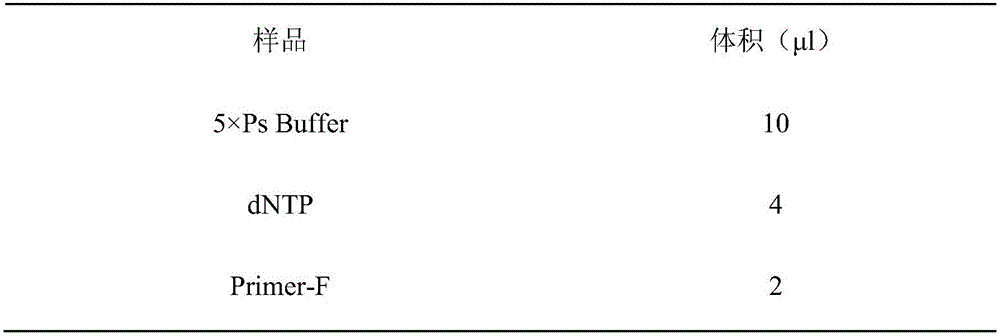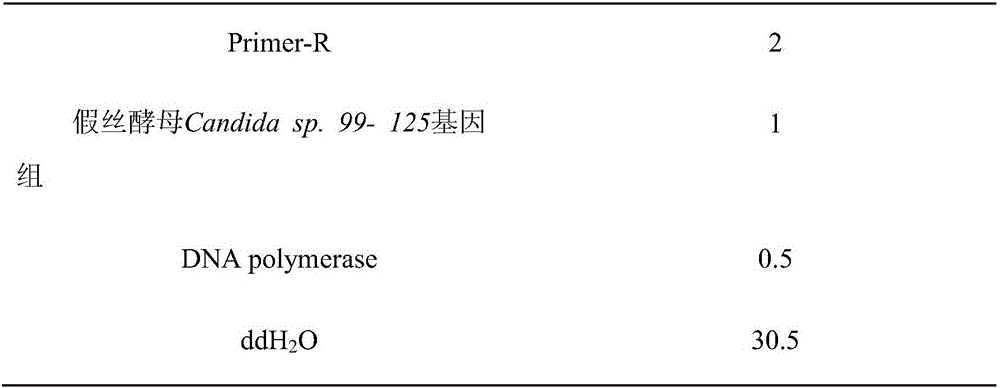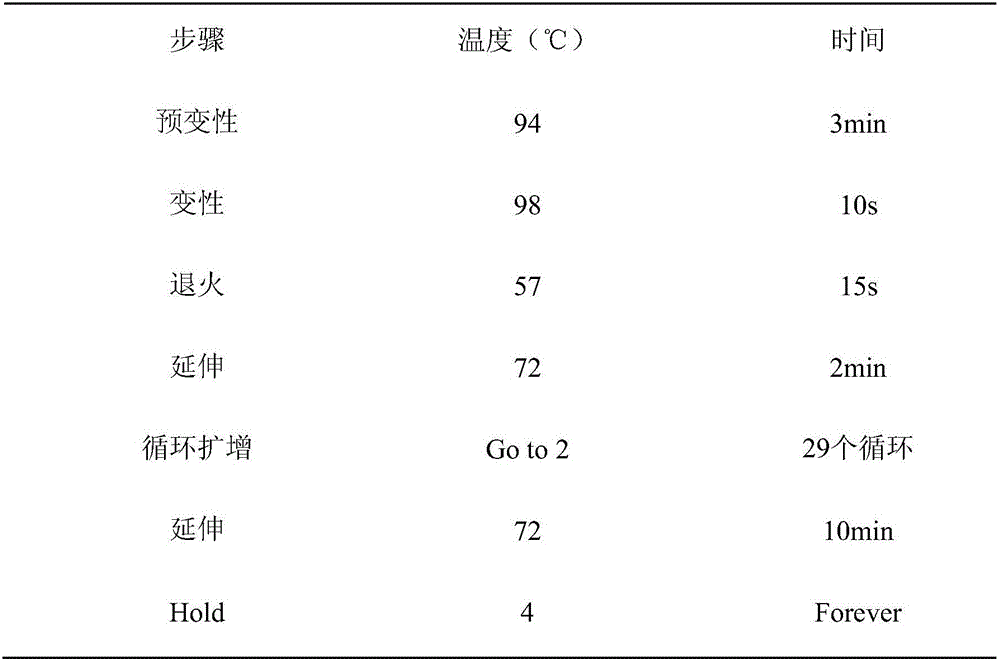Building method of pichia pastoris gene engineering strain for producing lipase
A technology of genetically engineered strains and construction methods, applied in the field of constructing genetically engineered strains of Pichia pastoris, can solve the problems of high price and high cost of biodiesel
- Summary
- Abstract
- Description
- Claims
- Application Information
AI Technical Summary
Problems solved by technology
Method used
Image
Examples
Embodiment Construction
[0025]1. The construction method of the Pichia genetically engineered strain producing lipase is characterized in that it is carried out in the following steps: one, the lipase gene is derived from the genome of Candida sp.99-125; the Candida sp.99-125 genome is extracted by the extraction kit Candida sp.99-125 genome; 2. PCR amplification of Lip14 gene: PCR amplification was performed using the Candida sp.99-125 genome extracted in step 1 as a template, the product was detected by electrophoresis, and the target gene band Purify and recover the target gene Lip14 by gel recovery kit; the forward primer for PCR amplification is 5'-GGAATTCGTTCTATTCTACAGTCATTGGAGAATGGT-3', and the reverse primer is 5'-GCTCTAGAAAAAAGATGGTGGAACCGTTGG-3' 3. Recombinant expression vector pPICZα-Lip14 Construction: The Lip14 gene purified in step 2 was digested with EcoR I and Xba I, and then purified and recovered by a PCR recovery kit. The expression vector pPICZαA was double digested with EcoR I and...
PUM
 Login to View More
Login to View More Abstract
Description
Claims
Application Information
 Login to View More
Login to View More - R&D
- Intellectual Property
- Life Sciences
- Materials
- Tech Scout
- Unparalleled Data Quality
- Higher Quality Content
- 60% Fewer Hallucinations
Browse by: Latest US Patents, China's latest patents, Technical Efficacy Thesaurus, Application Domain, Technology Topic, Popular Technical Reports.
© 2025 PatSnap. All rights reserved.Legal|Privacy policy|Modern Slavery Act Transparency Statement|Sitemap|About US| Contact US: help@patsnap.com



